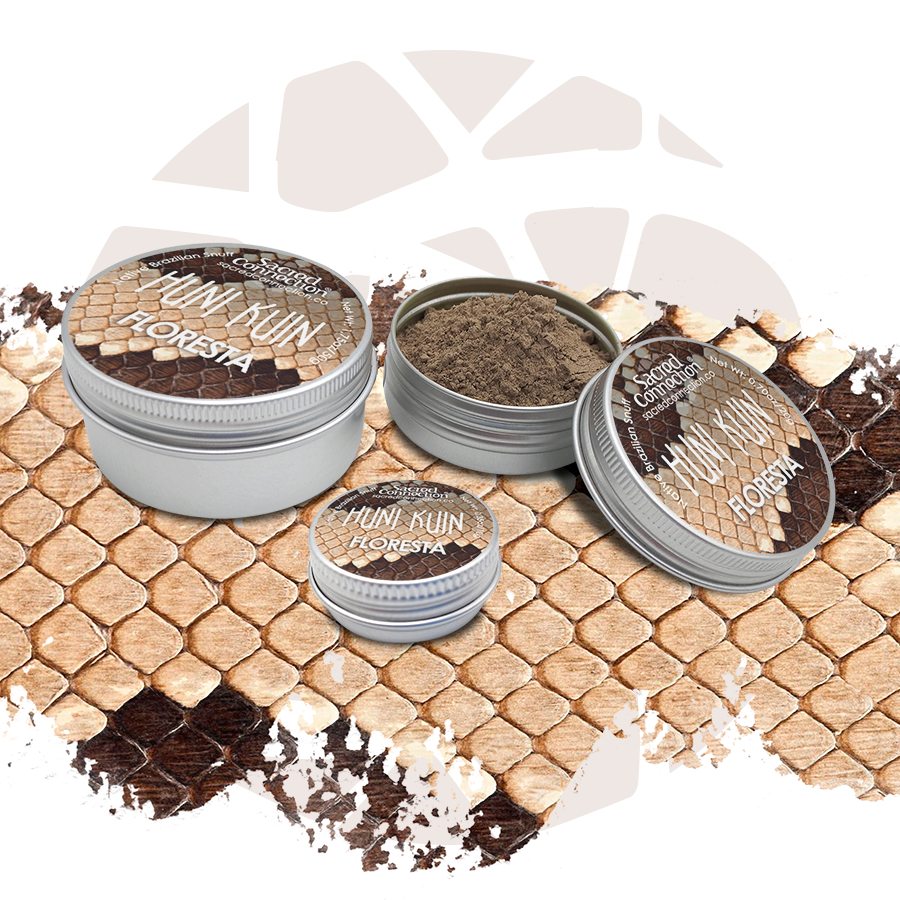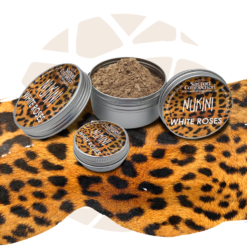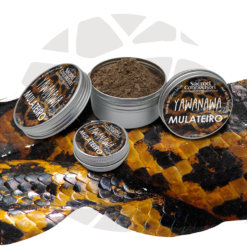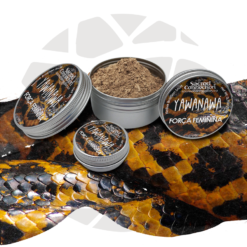More about Huni Kuin Floresta Rapé Snuff
This particular powerful Huni Kuin Floresta rapé was made with caneleiro ashes, sabia tobacco, some moi and a variety of herbs from the forest. It contains a mixture of leaves and vines that give it its unique character. Huni Kuin Floresta contains clove vine (Tynanthus elegans), lourinho, pixuri, veia de pajé vine and others. According to the maker this medicine is ideal for headaches and dizziness, bringing great relief and relaxation to the body. This special recipe comes from a friend from the tribe called Baimuka who lives way up in the forest close to Humaita. This is one of the Huni Kuin communities that lives furthest away in the jungle.
All the plants in this medicine have physical medicinal properties and spiritual beneficial ones. Many consider them healing on an energetic level curing the spirit. In the indigenous tradition most dis-ease starts on the emotional or spiritual level and then manifests as physical ailment. For this reason they don’t differ so much between the two as we westerners do in our cultural context.
Huni Kuin Rapé
The Huni Kuin or Kaxinawa are the most extensive tribe of the Brazilian state Acre and they also are present in Peru. There are estimated to be around 15.000 Huni Kuin in Brazil and some 3000 in Peru.
Some tribes like the Yawanawá have one particular simple recipe in their case made with tobacco and Tsunu ashes. The Huni Kuin use many different herbs and ashes creating a large variety of medicines for different specific uses. They even have rapé without tobacco. Maybe them living spread out over such a vast area might have contributed to the great variety of medicines they use.
More about Rapé…
Use with respect and care; it is a tobacco product and can be habit forming!
https://pib.socioambiental.org/en/Povo:Huni_Kuin_(Kaxinaw%C3%A1)











Reviews
There are no reviews yet.